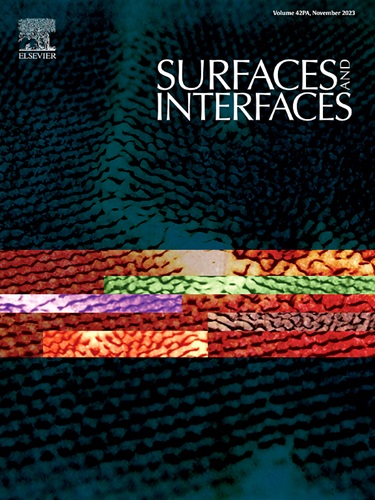Advantages of electrochemically deposited bioceramic-coating on magnesium implant for anti-corrosion and bone regeneration
IF 5.7
2区 材料科学
Q2 CHEMISTRY, PHYSICAL
引用次数: 0
Abstract
Magnesium implants offer the advantages of biodegradability and absorbability after implantation in bone fractures. However, they cause delayed bone regeneration owing to their fast biodegradation rates.
To address this issue, we attempted to utilize the bioactivity of bioceramic coatings and anti-corrosion property by doping Zn ions onto Mg implant surfaces. Zn-doped CaP bioceramic precipitation was induced on magnesium surfaces via electrochemical deposition in a mixed electrolyte of Ca(NO3)2 and NH4H2PO4 with varying concentrations of Zn(NO3)2. As a result, in an electrolyte containing a low concentration of Zn(NO3)2, a uniform film layer, consisting of hydroxyapatite (HA) and calcium zinc phosphate hydrate (CZPD) bioceramics, was formed with approximately 30 μm of thickness. This layer improved the corrosion resistance of the Mg surface in simulated body fluids and promoted the formation of bioactive substrates. Higher concentrations of Zn(NO3)2 in the electrolyte led to an enhanced corrosion resistance with increasing Ca(OH)2 precipitation. However, corrosion products were formed instead of bioactive substrates. Therefore, it was demonstrated that appropriate Zn(NO3)2 addition during electrochemical deposition induced stable osteoblast attachment and uniform formation of a new bone layer, delayed biodegradation with excellent corrosion resistance, and promoted bone regeneration through the formation of bioactive substrates during implantation.

求助全文
约1分钟内获得全文
求助全文
来源期刊

Surfaces and Interfaces
Chemistry-General Chemistry
CiteScore
8.50
自引率
6.50%
发文量
753
审稿时长
35 days
期刊介绍:
The aim of the journal is to provide a respectful outlet for ''sound science'' papers in all research areas on surfaces and interfaces. We define sound science papers as papers that describe new and well-executed research, but that do not necessarily provide brand new insights or are merely a description of research results.
Surfaces and Interfaces publishes research papers in all fields of surface science which may not always find the right home on first submission to our Elsevier sister journals (Applied Surface, Surface and Coatings Technology, Thin Solid Films)
 求助内容:
求助内容: 应助结果提醒方式:
应助结果提醒方式:


